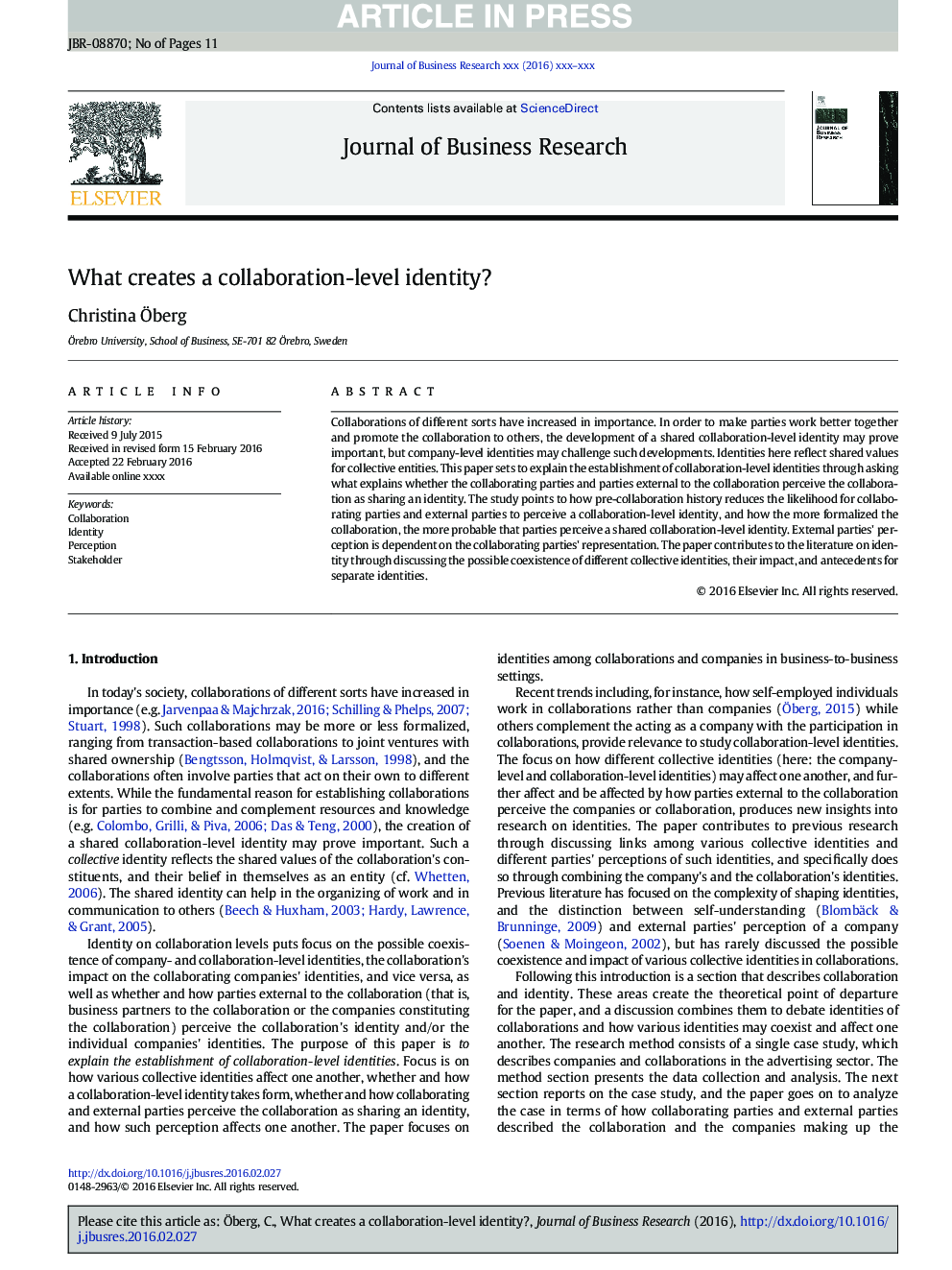| Article ID | Journal | Published Year | Pages | File Type |
|---|---|---|---|---|
| 10492491 | Journal of Business Research | 2016 | 11 Pages |
Abstract
Collaborations of different sorts have increased in importance. In order to make parties work better together and promote the collaboration to others, the development of a shared collaboration-level identity may prove important, but company-level identities may challenge such developments. Identities here reflect shared values for collective entities. This paper sets to explain the establishment of collaboration-level identities through asking what explains whether the collaborating parties and parties external to the collaboration perceive the collaboration as sharing an identity. The study points to how pre-collaboration history reduces the likelihood for collaborating parties and external parties to perceive a collaboration-level identity, and how the more formalized the collaboration, the more probable that parties perceive a shared collaboration-level identity. External parties' perception is dependent on the collaborating parties' representation. The paper contributes to the literature on identity through discussing the possible coexistence of different collective identities, their impact, and antecedents for separate identities.
Related Topics
Social Sciences and Humanities
Business, Management and Accounting
Business and International Management
Authors
Christina Ãberg,
